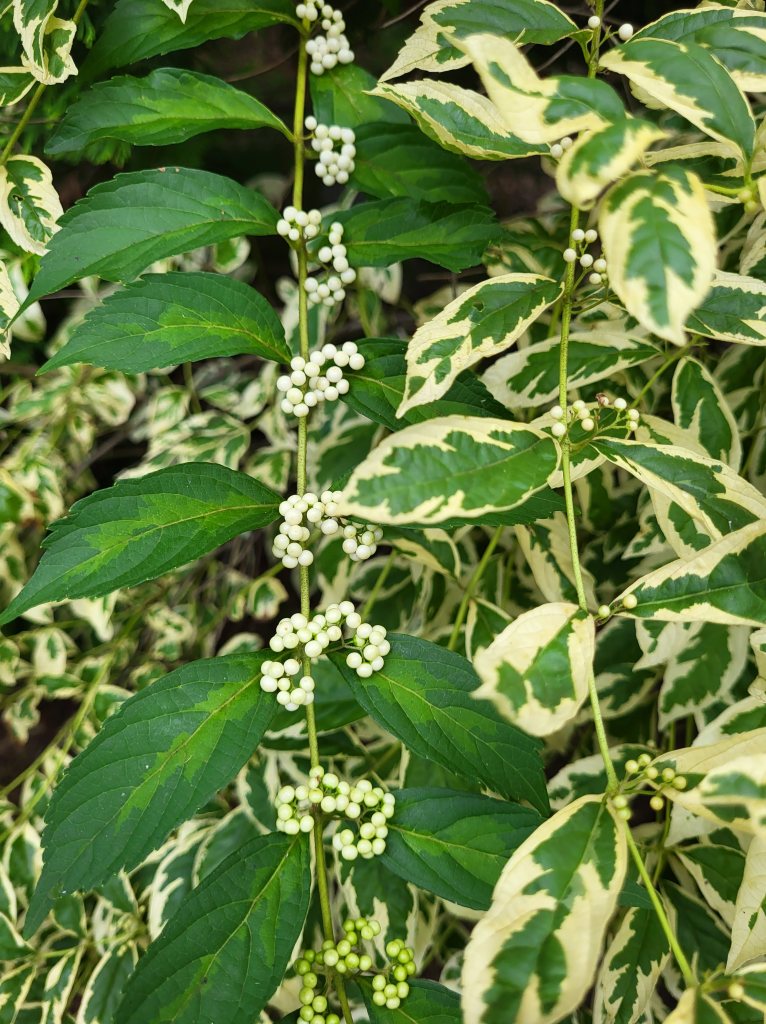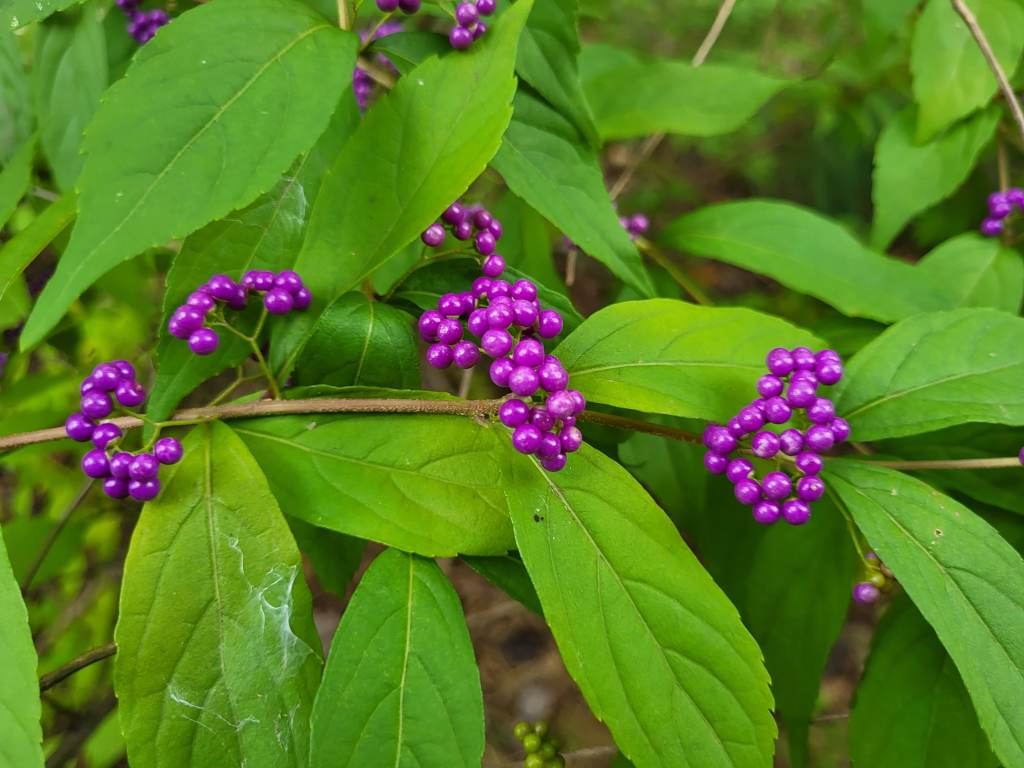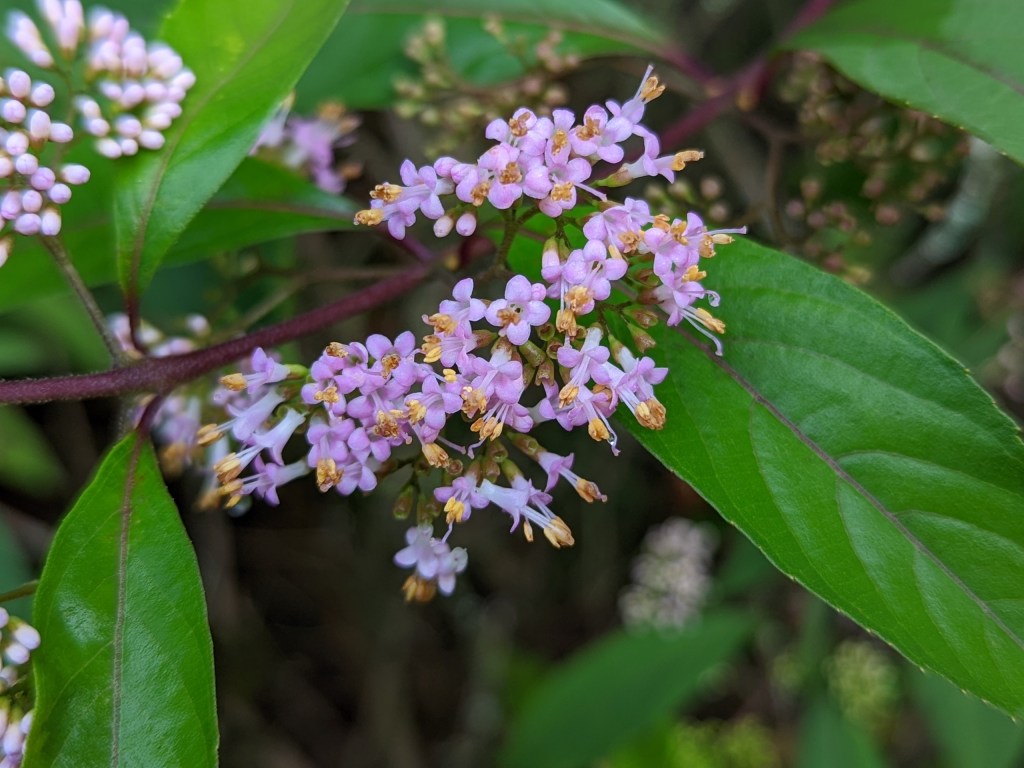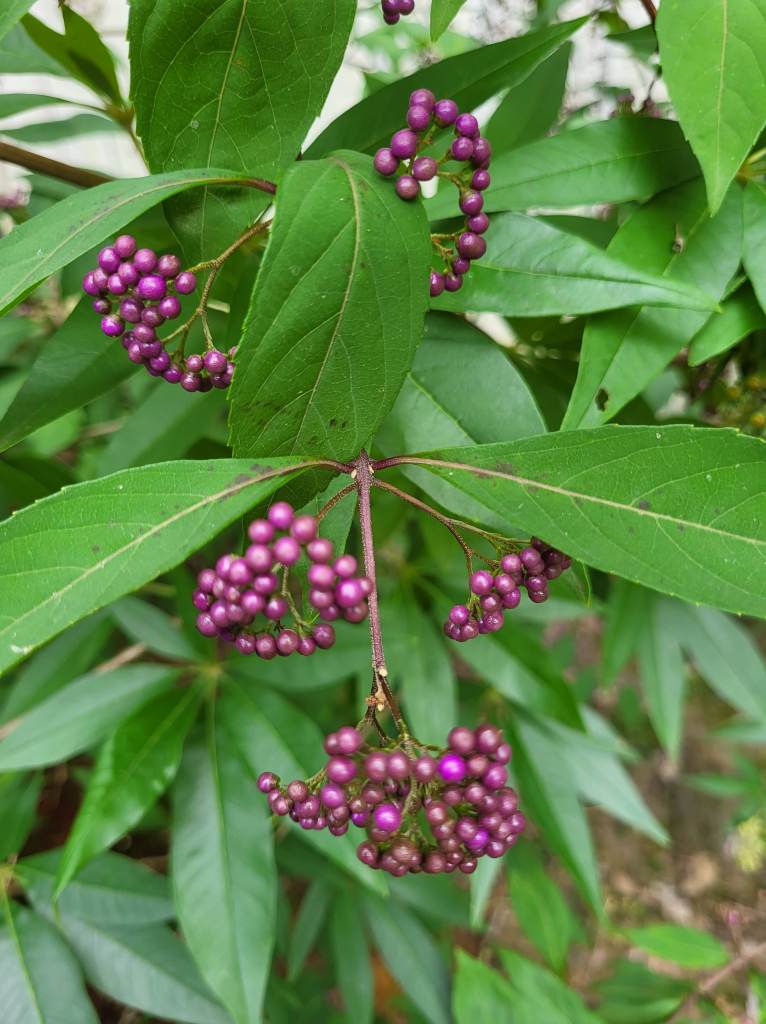A year ago, a mutated branch was noticed on the variegated ‘Duet’ beautyberry (Callicarpa dichotoma ‘Duet’, below). While reversion to the green leaf of the typical white berried beautyberry would be expected, this branch exhibited a muted yellow-green center to its green bordered leaf. I pledged to watch to see if the variegation returned this year. Of course, I forgot about it completely.

Today, the unusual branch was seen again as I noted the sparse quantity of small white berries as compared to other beautyberries in the garden. But, the green -yellow variegated branch has many more berries than other branches on the variegated shrub. I haven’t a clue why, or even a wild guess, but now I’ll flag this branch and try to root a few cuttings in the spring. I don’t expect this variegated beautyberry will be remarkable at all, but I am curious to see what becomes of it.

Today, I dug and potted three hefty seedlings of the green leafed, white berried beautyberry (Callicarpa dichotoma ‘Albifructus’, above) growing in damp ground in the lower, rear garden. I rarely push through the dense growth and muck to visit this area, but I noticed several purple berried seedlings along with a few white berries behind the parent shrub.

Along with several larger seedlings with berries, there were handfuls of smaller seedlings with no berries, and these were small enough to easily pop out of the ground. There is no surprise that there are both purple and white berried offspring from the white beautyberry, and the berry color of the three potted seedlings will remain a mystery until next autumn. Since purple is the dominant color in beautyberries, I would bet that only one of the three will be white berried.

While tiny, mid-summer flower clusters of beautyberries are only slightly ornamental (above), the purple and white berries are a highlight of the garden for weeks in autumn. The berries are small, but in large enough clusters to stand out on shrubs that grow to six feet and larger. All can be pruned harshly to easily manage their growth.



The American beautyberry in my garden is not a cultivar, but grew from seed from wild specimens in Virginia. I wanted the ‘natural’ sort rather than a cultivar. It would be excellent if there was a naturally occuring variety of the same species with white berries also! Even a cultivar would be nice. I suppose that I could not distinguish between the species anyway, so should be pleased with what is available online.
I prefer the purple berries, but with white berried beautyberries and red berried hollies, there’s a lot of color along with the flowers that will fade with our first frost.
Yes, that pinkish purple is too splendid and distinctive to not be preferred. I mean, beautyberry seems like it ‘should’ be that color. White just happens to be my favorite color.